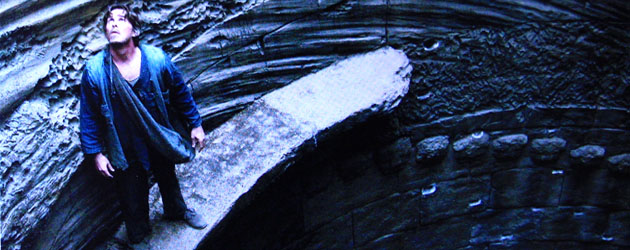Nathan Crowley

And then I walked into Small’s, a bar on Melrose, and bumped into a friend from art college who’d been working in Hollywood for a few years as a set designer. He said they needed set designers on Hook. There were none available because the Universal backlot had burned down, weirdly, and they’d hired everyone off the set designer’s roster to redraw Universal. My friend said, You can draw, can’t you? And Norman Garwood, the production designer on Hook, (and on Brazil) hired me as a junior set designer in the old MGM drafting room and he got me in the union. It was a couple of fortunate events.
AS: How did you make the jump from Set Designer to Art Director?
NC: Norman came in and said, You don’t know anyone in Hollywood, do you? How are you going to get a job? I hadn’t really thought that far. He said, I know the designer on Bram Stoker’s Dracula. So he went next door and got me a job on Bram Stoker’s Dracula. I didn’t even know I wanted to do art direction. I was on it for eleven months as set designer and didn’t get credit. Then they needed someone with Roman Coppola on second unit. I ended up doing all that puppeteering, the mirror work, matte projection, and hours and hours of cutouts for the opening sequence. That’s where I really got into the magic of art direction. I’d always been interested in optical illusions. Even though I wasn’t an art director and shouldn’t have been on stage I basically got assigned second unit and there I realized I wanted to be an art director. Then I went to work on Star Trek as a set designer again because I needed a job but it made me realize I didn’t want to be a set designer anymore. I didn’t want to draw, I wanted to be on stage. I quit that show and got hired as an art director on an independent Abel Ferera film with Madonna, Dangerous Game.
AS: How did Art Direction lead to Production Design?
NC: I was taken from LA to Ireland as an art director on Braveheart and it was there I realized I wanted to be production designer. But how do I do that? It’s a hard jump to make. Very difficult in Hollywood. There were a couple of Irish producers on Braveheart who mentioned, There are many small films coming here with Hollywood directors. They don’t want to bring in people so they hire local designers but there aren’t any local designers.
I went back to LA and did some more Art Direction and then I thought, You know I’m just going to move to Ireland. I kind of went backwards. I started on big Hollywood films and ended up working on small BBC filmed-in-Ireland productions and low budget films. I also did a bunch of commercials. I trained myself as a designer. My first big break was when Barry Levinson hired me on An Everlasting Piece. The film did not get a big release but I met a few key L.A. producers.
AS: Was that in Ireland still?
NC: Yes, that was in Ireland. I moved to Dublin for three years. It seemed like a crazy plan but ended up being a successful plan to become a designer. I had to go back to those low-budget films. It wasn’t a bad thing to start with big budget films and go backwards and do some training. I became an Irish designer even though I was English.
Then Mark Johnson, the producer of Barry’s film, said, What are you doing here? You’re a good designer. I can help get you an agent in Hollywood. Which he did. And the next film that came along was with an Irish director called John Moore and it was Behind Enemy Lines. John Moore was a good guy I knew from Dublin. We’d been doing commercials together. It was an exhausting film and after the last week of filming I was sitting on the bow of the aircraft carrier USS Vinson with my feet hanging off, returning to San Diego harbor. The phone rings and it’s my agent saying, Hey, there’s this English director called Chris Nolan. He just did his first film and he’s got this other film called Insomnia. Can you get in a car and go meet him this afternoon?
Pingback: Rick Heinrichs